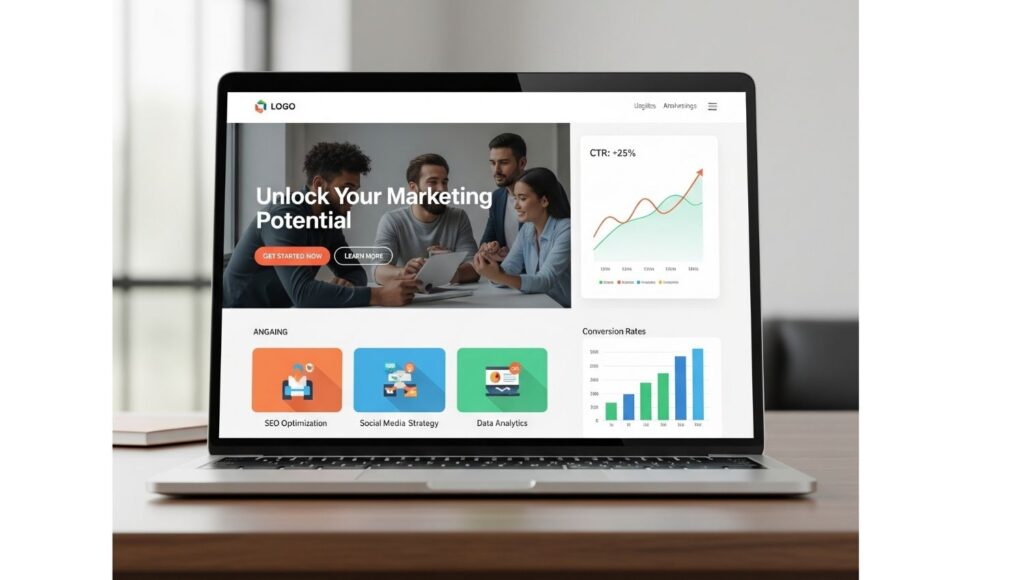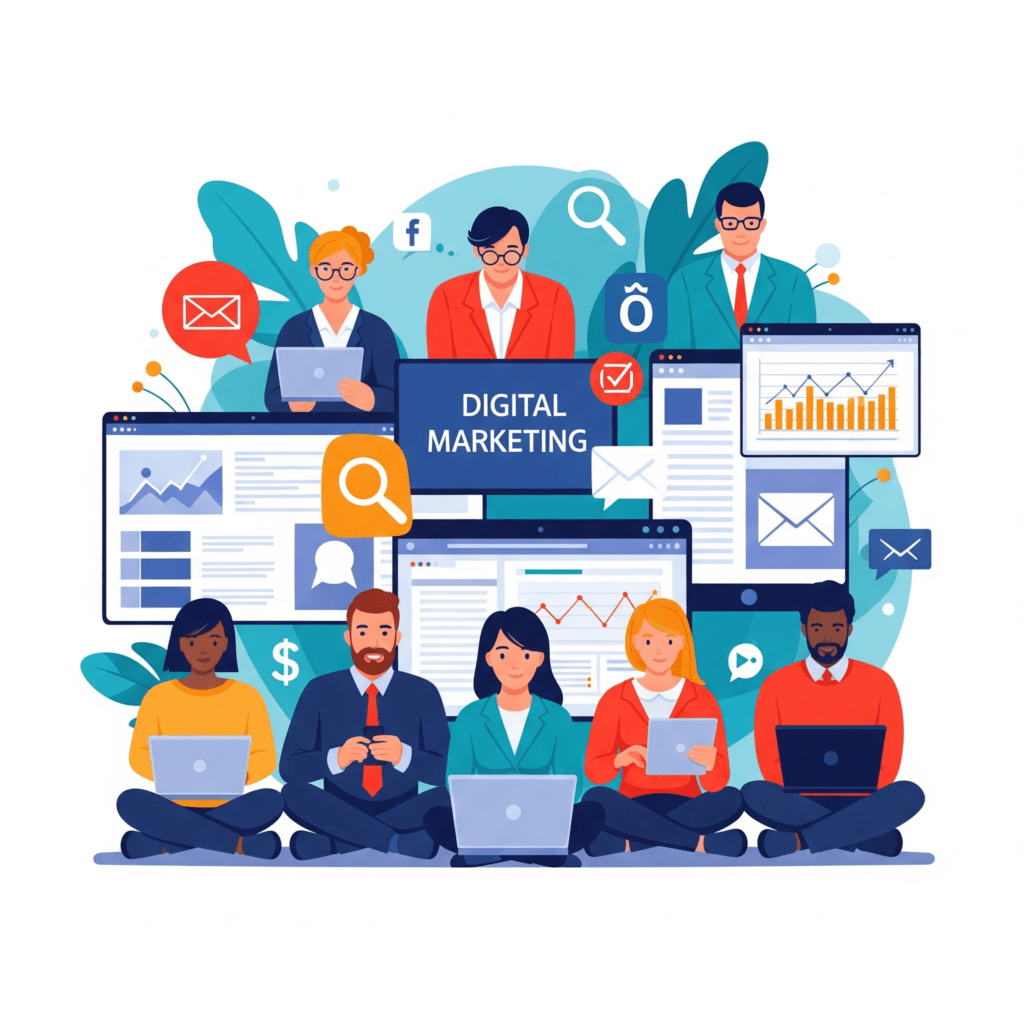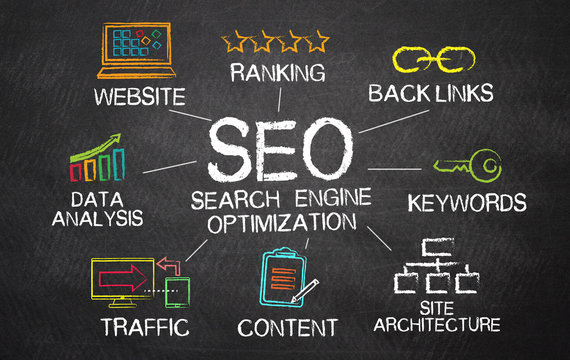Table of Contents

Introduction – Click-through Rate
When you put money into a landing page—be it for a product, service, or campaign—you want it to work for you. Traffic, however, is only half the battle; the true magic happens with the number of visitors who click through and convert. The Click-through Rate (CTR) is probably one of the most critical statistics to gauge the effectiveness of your landing page.
In this guide, we will break down proven strategies, design principles, and psychological triggers that can help you skyrocket your CTR, all while ensuring your landing page offers an engaging, value-packed experience for visitors.
Chapter 1: Understanding CTR for Landing Pages
CTR is the percentage of people who visit your landing page and click on your desired link, button, or call-to-action (CTA).
Formula:
CTR = (Number of Clicks ÷ Number of Impressions) × 100
Low CTR typically means:
- Targeting audiences poorly
- Weak or ambiguous value proposition
- Dull design or slow speed
- Poor CTA placement or weak copy
Boosting CTR begins with identifying why people aren’t clicking and making adjustments to overcome these obstacles.
Chapter 2: Craft a Clear and Compelling Value Proposition
Your landing page must immediately answer the “What’s in it for me?” question. Visitors usually make up their minds in 5 seconds on whether to stay or go.
How to develop a good value proposition:
- Headline: Make it clear, benefits-oriented, and simple.
- Subheadline: Follow your headline with a concise, compelling sentence.
- Visuals: Employ the same or similar images or videos that reinforce your message.
Example:
Rather than write “Our software is advanced”, write “Save 10 hours a week with our automated reporting tool”.
Chapter 3: Maximize Your Call-to-Action (CTA)
Your CTA is the deciding factor for clicks.
CTA best practices:
- Use action-oriented words: “Get Started,” “Claim Your Free Trial,” “Download Now”
- Make it visually prominent with contrasting colors
- Place CTAs above the fold and repeat them naturally across the page
- Make CTA copy benefit-focused and not generic
Psychological trigger: Appeal to urgency (“Offer ends tonight”) or exclusivity (“Only 50 spots left”) in order to drive action.
Chapter 4: Optimize Page Design and Layout
Even good copy won’t succeed if your page is cluttered or confusing.
Design tips for higher CTR:
- Minimalism triumphs: Eliminate clutter that takes away from the primary goal
- Logical flow: Lead visitors through a visual hierarchy
- Mobile-first design: Users most often browse on mobile, so ensure buttons are big and legible
- White space: Enhances concentration and minimizes overwhelm
Chapter 5: Use Engaging and Relevant Visuals
Humans process graphics 60,000 times faster than words.
- Incorporate high-quality images of products or services being used
- Include videos to describe your offer in brief
- Apply illustrations and infographics to make information consumable
Pro tip: A video can boost conversions by up to 80% when used near a CTA.
Chapter 6: Leverage Social Proof
Social proof establishes trust in an instant, so visitors are more inclined to click.
- Customer testimonials with names and pictures
- Case studies with genuine results
- Trust badges such as certifications, media coverage, or security seals
Chapter 7: Write Persuasive Copy
Your copy on the landing page must:
- Be audience-specific
- Emphasize benefits rather than features
- Employ storytelling to build emotional connection
- Don’t use jargon and keep sentences concise
Chapter 8: A/B Testing for CTR Improvement
You can’t guess what works—you test it.
- Test headlines: Short vs long, emotional vs logical
- Test CTA placement: Top, middle, or bottom of the page
Test colors and button shapes
Document results and implement winning variations.
Chapter 9: Improve Page Load Speed
If your landing page loads more than 3 seconds, you lose visitors before they get to view your CTA.
- Compress images
- Use lazy loading
- Opt for a speedy hosting provider
- Keep code to the barest minimum
Chapter 10: Personalization
Personalized landing pages perform better than generic ones.
- Utilize location-based headlines (“Get Free Delivery in Mumbai”)
Show relevant offers based on user behavior
Use dynamic text replacement for PPC campaigns
Chapter 11: Remove Distractions
Your landing page must have one key objective—not a few competing CTAs.
- Eliminate unnecessary navigation menus
- No pop-ups interrupting reading
- Direct every section towards the primary click objective
Chapter 12: Create a Sense of Urgency
Human beings procrastinate until provided with a reason to click now.
- Countdown timers for promotions
- Stock scarcity messages (“Only 5 left”)
- Seasonal offers
Chapter 13: Optimize for Mobile CTR
- Keep headlines at 50 characters or less for quick reading
- Place thumbs-friendly buttons
- Minimize scrolling for crucial information
Chapter 14: Track, Measure, and Improve
Use a tool such as Google Analytics or heatmaps to observe:
- Which areas receive the most attention
- Where people fall off
- How frequently CTAs are clicked
FAQs
- What is Click-through Rate (CTR) on a landing page?
Click-through Rate (CTR) is the percentage of visitors that click on a link, button, or CTA on your landing page out of total visitors. - Why should landing pages care about CTR?
Increased CTR indicates more visitors are doing what you want them to, resulting in improved conversions and enhanced ROI from your campaigns. - How do I boost my landing page CTR fast?
Utilize effective headlines, easy-to-read CTAs, optimized graphics, and align your content with visitor intent. - Does page loading speed influence CTR?
Yes. A slow page loads will have visitors exiting without engaging, which diminishes your CTR.
- How do I know whether my landing page CTR is good?
Benchmark is industry-dependent but is usually over 4-5% for most landing pages.
Conclusion
Optimizing CTR on landing pages isn’t a once-off process—it’s a continuous endeavor. From inciting headlines to effective CTAs, grabbing imagery, and ongoing testing, every minor adjustment can lead to a significant increase in clicks and conversions.


